Activity trackers are getting more powerful, and smartwatches are getting healthier.



Samsung Galaxy Watch

The Apple Watch Series 4 might look the same as last year’s model but it has numerous improvements.
The two case sizes available now are 44mm and 40mm - 2mm larger than their predecessors. But case thickness has actually been reduced from 11.4mm to 10.7mm. On the wrist, the difference is surprisingly pronounced, with better comfort and proportions.
The display is over 30% larger too. Apple even designed two exclusive Series 4 watch faces (Infograph and Infograph Modular) that can show up to eight complications to track of more stuff .
Also new are a haptic Digital Crown and louder speakers. Haptic feedback provides a more intuitive experience scrolling through long lists, while the louder speakers comes in extremely useful for the Walkie-Talkie feature in watchOS 5.
The Series 4 watches are powered by Apple’s 64-bit S4 processor. A new W3 wireless chip supports Bluetooth 5.0 for quicker wireless transfers and improves power consumption.
Series 4 also comes with improved sensors. The accelerometers and gyroscope are now more sensitive and can detect double the dynamic range. This allows it to detect if the wearer has a serious fall, and automatically notifying emergency services with your location, a nifty feature for the elderly.
Talking about sensors, the last big improvement comes in the form of new electrical heart rate sensors capable of taking an electrocardiogram using the ECG app. Note that this feature requires regulatory approval from relevant health authorities to work, and may not be available in your location.
I’m not a particularly heavy user, and I find myself left with about 50% to 60% battery at the end of the day. Using cellular data, however, will put a huge drain on battery life so use judiciously. In short, Series 4 will still require nightly charging to get the best out of it.

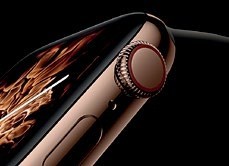


CASIO PROTREK WSDF30

Casio’s third attempt at a smartwatch, the WSD-F30 is one handsome beast, with a standout color and strealimed design that successfully hides how huge it is. It’s nearly 54mm wide, and yet the 46mm Samsung Galaxy Watch looks larger at a glance. I’ve gotten more compliments wearing the F30 than any other watch in this shootout.
Under the ProTrek name, the F30 is built as an outdoor adventure watch and comes with a set of ten “Featured Apps” you can install from hiking to horse riding. Bear in mind that these apps are available to all Wear OS devices too. However, Casio claims to have partnered with the developers to optimize them for the F30.
However, the F30 is the only watch in this shootout that does not feature a heart rate sensor, making it less useful as a daily activity tracker. For a smartwatch released in 2019, this is a rather unfortunate omission. It also doesn’t have NFC, so you can’t use Google Pay either.
Its standout feature is a dual layer display combining a 1.2-inch color OLED with a monochrome LCD. This means the F30 can work in either full smartwatch or time keeping mode, which turns it into a standard digital ProTrek watch. It can run for up to a month in this mode before the battery goes completely flat.
In smartwatch mode, battery performance was a mixed bag. In normal conditions, it lasted above two days days, higher than advertised. However, the moment any active tracking is used, such as a workout, and you’ve got yourself a dead watch in a few hours. Very disappointing given that the F30 doesn’t even have a heart rate sensor.
For Casio fans, the F30 is a step up from a regular ProTrek, and it carries the rugged look best. However, you can’t help but notice the lack of basic features expected from a smartwatch in 2019 when put against the competition. It doesn’t help that the F30 costs $749, the second most expensive smartwatch in this shootout.




A large, retro-like magnetic type charging cable easily snaps off due to angle and position of the port.
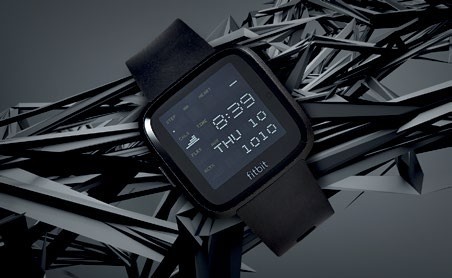
The Fitbit Versa is a smartwatch that does both notifications and fitness tracking for less money. At $318, it costs less than most other smartwatches, including Fitbit’s own Ionic, which retails at $458.
The Versa includes many of the Ionic’s features, but there are sacrifices to get the price down. There’s no GPS and battery life is down from five to four days. The classic band the Versa ships with isn’t as comfortable as the one on the Ionic. But on the plus side, the Versa is more attractive.
Fitbit OS, which powers the Versa, is rudimentary. Swapping watch faces, for example, involves a trip to the Fitbit app on the phone, picking a face, and a quick reboot. With the latest Fitbit OS 3.0 though, you do get more customization and Fitbit Today offers a summary glance of multiple stats.
A major sore point is the lack of calendar support. How the Versa handles notifications is also quite simple. Canned responses was introduced for Android-paired Versas, but you can’t do anything on iOS.
The Fitbit smartphone app is a shining light among fitness apps. It’s easy to see your key stats on a single page; Apple Health and Garmin Connect are more obtuse for example, while Google Fit and Huawei Health are simplistic. It’s great how the app doesn’t just track how you’re doing, but also gives you a benchmark for people your age. That helps you know if stats need work.
I found the Versa accurate at tracking when I woke up and went to sleep. The Versa seems to get resting heart rates mostly correct, and it does the same for steady-state exercise. But the Versa is slow to catch up when it comes to high-intensity intervals.

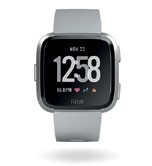


GARMIN FENIX 5 PLUS SERIES

Garmin’s fenix series has enjoyed quite a strong following with trail runners and hikers. Like the Casio F30, it’s an outdoors smartwatch. It has a higher waterproof rating than the Casio, up to 10 ATM, it doesn’t carry MIL standards, making it less rugged than either the Casio or Samsung.
The fenix 5 Plus is an iterative update of the fenix 5, with new features including color maps, Galileo satellite reception, Spotify streaming and offline music playback. It also features NFC contactless payments via Garmin Pay, but only one bank in Singapore (OCBC) supports it so far.
There are three size variants of the fenix 5 Plus, the smaller 5S Plus (shown here), the larger 5 Plus and the largest 5X Plus (the only version with a Pulse Oximeter function).
The 5S Plus is more stylish than its larger siblings, but it shares the same design layout. All the 5 Plus watches do not have touchscreens, instead relying on five physical buttons for operation. It does have a color display, but it is the dimmest with the lowest resolution of all.
The fenix 5S Plus has a decent optical heart rate sensor, though I found it didn’t refresh as frequently as the other watches. As a result, real-time tracking felt like the 5S Plus was lagging. I found this behavior similar in the Garmin Connect app too, from downloading apps or just syncing data. Even notification frequency seemed erratic, and I sometimes found myself waiting on the 5S Plus after my phone had already buzzed multiple times.



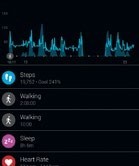
I like the Calendar tab on the Garmin Connect app, which groups and all tracked activities in a day to deep dive into.

The Huawei Watch GT reads on paper like an absolute monster of a smartwatch: dual-core processor, multi-network GPS, per-second heart rate monitoring, 5 ATM water resistance, large 1.39-inch AMOLED screen and a massive two week battery life, all for a starting price of just $298. That’s even cheaper than the Fitbit Versa.
Eschewing Google Wear OS, the Watch GT features Huawei’s own LiteOS. In its present form, there’s no app store, no custom watch faces, and all sensor data residing solely within Huawei’s own Health app. In fact, the Health app is only way you can pair the Watch GT.
While the touchscreen is responsive, UI animations don’t feel smooth between transitions. Huawei could have done more to utilize the large AMOLED screen too. For example, messages cut off even though there’s plenty of blank space. Neither emojis nor pictures are supported, so you’ll often get ‘broken’ previews.
As mentioned at the start, the Watch GT’s suite of sensors matches up with the best in this shootout. This really puts into perspective the cost technology compared to what Casio and Garmin charges for their devices. The only thing lacking is contactless payment support.
Huawei’s TruSeen 3.0 per-second heart rate monitor does its job well enough, though Huawei’s Health app isn’t as comprehensive as Fitbit or Samsung Health. Surprisingly, the Watch GT’s sleep analysis is very detailed.
Battery life is amazing. Using the Watch GT for a week inclusive of daily 2-hour workout sessions only brought it down to about 40%. What’s more, I found the Watch GT to still be kicking at 15% battery after being kept in a drawer for about two weeks as I tested the rest of the watches.



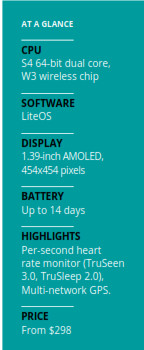
SAMSUNG GALAXY WATCH

The Samsung Galaxy Watch is an amalgamation of last year’s Gear S3 Frontier Edition and S3 Sport. It’s the only other watch in this shootout besides the Casio that has MIL-STD-810G classification for proper shock and bump protection. The screen is also protected by Gorilla Glass and can be used for swimming.
The Galaxy Watch comes in two sizes, 46mm (seen here) and 42mm. It accepts 22mm/20mm tool-less straps, which is great as I found the bundled silicon strap to be ill fitting.
The Galaxy Watch runs on Samsung’s Tizen OS and everything works similarly to the Gear S3. The rotating bezel—the best feature on Samsung smartwatches—makes its return, but if you’re more touch inclined, the screen is responsive and the Super AMOLED display is incredibly bright and sharp, making whatever watch face you choose convincingly real.
The most significant improvement is battery life. The Galaxy Watch consistently lasted me about five days. That said, turning on Always On display will dock about a day off the battery.
Samsung Health functions have been massively upgraded, tracking up to 39 activities. The Galaxy Watch however, only allows four presets. I would have loved to be able to configure a custom workout circuit as a preset instead. Otherwise, the auto-tracking feature is useful, but limited to cardio exercises. You can also track your day down to a granular level on the Samsung Health app from sleep to cups of coffee you drink a day, with deeper insights than most of the other apps here with the exception of Fitbit’s app.
Its heart rate sensor is quite accurate, though heavy sweating will interfere with taking ad hoc readings.
The Galaxy Watch supports NFC for contactless payments with Samsung Pay, and voice commands via Bixby Voice. However, I found voice recognition still slow and clunky; you’re better off just taking your phone out.




SPECIFICATIONS


AND THE BEST SMART WATCHES ARE…
SAMSUNG GALAXY WATCH
There’s a lot to like about the Samsung Galaxy Watch. Its repertoire of features on a single wearable is probably only matched by the Apple Watch Series 4. And as the big two in the mobile space, that’s not surprising. However, the Galaxy Watch is more durable, longer lasting, much more affordable, and has greater device compatibility than the Apple Watch, which ultimately makes it the better overall premium smartwatch in our books.
FITBIT VERSA























